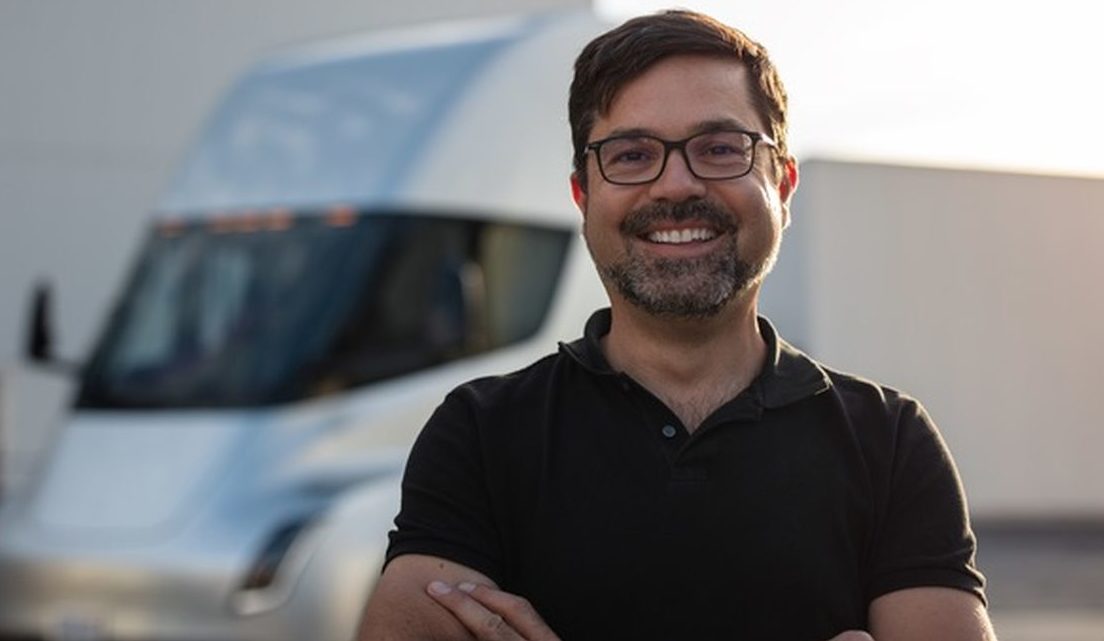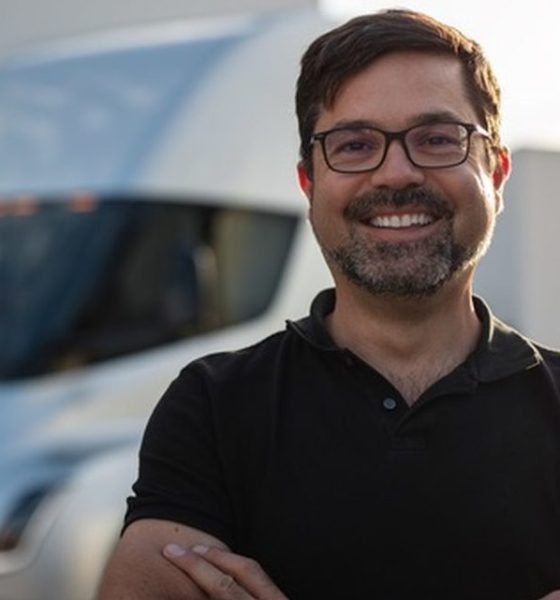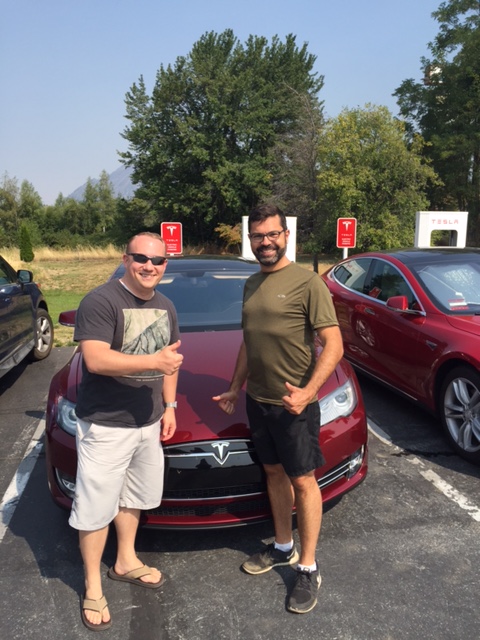

Investor's Corner
Tesla’s veteran problem solver Jerome Guillen is Elon Musk’s most strategic appointment yet
Earlier this month, Tesla CEO Elon Musk announced a series of strategic promotions that are aimed at taking the company to reach new heights in the years to come. Among the promotions, Elon Musk’s appointment of veteran accomplisher Jerome Guillen as the company’s new President of Automotive stood out. As the end of the third quarter approaches, it is starting to look like Elon Musk’s promotion of the hands-on executive was the correct strategy.
Jerome Guillen joined Tesla back in 2010 as the director of the Model S program. Prior to his employment at Tesla, Jerome served as the project leader for Daimler’s Freightliner Cascadia program, and eventually as head of the company’s Business Innovation unit. By the time he left for Tesla, Daimler’s Business Innovation unit was profitable and self-funding.
When Jerome joined the electric car maker, Tesla was still a fledgling startup that only produced and delivered a small number of its two-door Roadster to a select group of customers. Being the first vehicle that the company designed from the ground up, a lot was riding on the Model S, particularly as critics of the company were quick to dismiss the electric car as “vaporware.” Guillen was a hands-on executive, and for some early customers of the Model S, he became the go-to person when issues arose.

And issues did arise. When Tesla started delivering the Model S to reservation holders, the company lacked sufficient sales and service centers. Tesla was delivering vehicles directly to people’s homes, and while this worked well for the first few hundred handovers in California, it became a big logistical headache for the company when customers from faraway states started ordering the electric car. Elon Musk, for his part, opted to have Jerome add sales, service, and deliveries to his portfolio. The hands-on executive handled the task well, even developing a reputation for being incredibly responsive to emails and concerns from regular customers.
Early Model S adopter Andrew Wolfe of Los Gatos, California noted in a statement to Bloomberg that he was among the customers who were in constant communication with the executive. Wolfe noted that Jerome was always open to suggestions, such as where Tesla should consider opening additional service centers, as well as the company’s points for improvement in terms of loaner vehicles.
Jerome’s work with the Model S program would ultimately help lay the groundwork for the company’s following vehicles, the Model X SUV and later, the Model 3. The executive briefly took a leave of absence from the company in 2015, but later returned to head the Tesla Semi program. Over the past months, sightings of the Semi across the United States would feature Jerome from time to time, accompanying the long-hauler’s hand-built alpha prototype on its road tests.

While he was heading the Tesla Semi program, Jerome’s out-of-the-box problem-solving skills would prove useful for the company’s overall operations. Back in June, Tesla made headlines when Elon Musk revealed that a new Model 3 assembly line had been set up inside a sprung structure on the grounds of the Fremont factory. The line, dubbed as GA4, was ultimately responsible for giving the company’s production the boost it needed to hit its target of producing 5,000 Model 3 a week before the end of the second quarter. Analysts from Evercore ISI who toured the Fremont factory later noted that GA4 “looked very much like general assembly at other auto plants which we have visited,” and that the “facility looks set to be permanent and in theory should be able to support much faster cycle times.” As Elon Musk would later reveal, GA4 was Jerome Guillen’s brainchild.
The appointment of an executive such as Jerome as the President of Automotive could prove to be Elon Musk’s most strategic move this third quarter. At this point in Tesla’s growth, with hundreds of thousands of reservations in line for the Model 3, the company is pretty much in a situation similar to the one it faced when it was struggling to deliver the Model S to customers across the US. From this perspective, at least, Jerome Guillen appears to be the right man for the job.
It remains to be seen what Jerome’s full responsibilities are now that he is serving as President of Automotive, but amidst Tesla’s end-of-quarter delivery push for the Model 3, the company has begun adopting some out-of-the-box solutions for its current logistical problems. In a recent tweet, for example, Elon Musk noted that Tesla is experiencing a bottleneck in the car carrier trailers transporting vehicles from the Fremont factory to its delivery centers. To help address this issue, Musk stated that Tesla has begun building its own car carriers to help foster quicker deliveries. This is speculation, but such an unorthodox solution carries some very Jerome Guillen-like undertones.

Investor's Corner
Tesla stock closes at all-time high on heels of Robotaxi progress

Tesla stock (NASDAQ: TSLA) closed at an all-time high on Tuesday, jumping over 3 percent during the day and finishing at $489.88.
The price beats the previous record close, which was $479.86.
Shares have had a crazy year, dipping more than 40 percent from the start of the year. The stock then started to recover once again around late April, when its price started to climb back up from the low $200 level.
This week, Tesla started to climb toward its highest levels ever, as it was revealed on Sunday that the company was testing driverless Robotaxis in Austin. The spike in value pushed the company’s valuation to $1.63 trillion.
Tesla Robotaxi goes driverless as Musk confirms Safety Monitor removal testing
It is the seventh-most valuable company on the market currently, trailing Nvidia, Apple, Alphabet (Google), Microsoft, Amazon, and Meta.
Shares closed up $14.57 today, up over 3 percent.
The stock has gone through a lot this year, as previously mentioned. Shares tumbled in Q1 due to CEO Elon Musk’s involvement with the Department of Government Efficiency (DOGE), which pulled his attention away from his companies and left a major overhang on their valuations.
However, things started to rebound halfway through the year, and as the government started to phase out the $7,500 tax credit, demand spiked as consumers tried to take advantage of it.
Q3 deliveries were the highest in company history, and Tesla responded to the loss of the tax credit with the launch of the Model 3 and Model Y Standard.
Additionally, analysts have announced high expectations this week for the company on Wall Street as Robotaxi continues to be the focus. With autonomy within Tesla’s sights, things are moving in the direction of Robotaxi being a major catalyst for growth on the Street in the coming year.
Elon Musk
Tesla needs to come through on this one Robotaxi metric, analyst says
“We think the key focus from here will be how fast Tesla can scale driverless operations (including if Tesla’s approach to software/hardware allows it to scale significantly faster than competitors, as the company has argued), and on profitability.”

Tesla needs to come through on this one Robotaxi metric, Mark Delaney of Goldman Sachs says.
Tesla is in the process of rolling out its Robotaxi platform to areas outside of Austin and the California Bay Area. It has plans to launch in five additional cities, including Houston, Dallas, Miami, Las Vegas, and Phoenix.
However, the company’s expansion is not what the focus needs to be, according to Delaney. It’s the speed of deployment.
The analyst said:
“We think the key focus from here will be how fast Tesla can scale driverless operations (including if Tesla’s approach to software/hardware allows it to scale significantly faster than competitors, as the company has argued), and on profitability.”
Profitability will come as the Robotaxi fleet expands. Making that money will be dependent on when Tesla can initiate rides in more areas, giving more customers access to the program.
There are some additional things that the company needs to make happen ahead of the major Robotaxi expansion, one of those things is launching driverless rides in Austin, the first city in which it launched the program.
This week, Tesla started testing driverless Robotaxi rides in Austin, as two different Model Y units were spotted with no occupants, a huge step in the company’s plans for the ride-sharing platform.
Tesla Robotaxi goes driverless as Musk confirms Safety Monitor removal testing
CEO Elon Musk has been hoping to remove Safety Monitors from Robotaxis in Austin for several months, first mentioning the plan to have them out by the end of 2025 in September. He confirmed on Sunday that Tesla had officially removed vehicle occupants and started testing truly unsupervised rides.
Although Safety Monitors in Austin have been sitting in the passenger’s seat, they have still had the ability to override things in case of an emergency. After all, the ultimate goal was safety and avoiding any accidents or injuries.
Goldman Sachs reiterated its ‘Neutral’ rating and its $400 price target. Delaney said, “Tesla is making progress with its autonomous technology,” and recent developments make it evident that this is true.
Investor's Corner
Tesla gets bold Robotaxi prediction from Wall Street firm
Last week, Andrew Percoco took over Tesla analysis for Morgan Stanley from Adam Jonas, who covered the stock for years. Percoco seems to be less optimistic and bullish on Tesla shares, while still being fair and balanced in his analysis.

Tesla (NASDAQ: TSLA) received a bold Robotaxi prediction from Morgan Stanley, which anticipates a dramatic increase in the size of the company’s autonomous ride-hailing suite in the coming years.
Last week, Andrew Percoco took over Tesla analysis for Morgan Stanley from Adam Jonas, who covered the stock for years. Percoco seems to be less optimistic and bullish on Tesla shares, while still being fair and balanced in his analysis.
Percoco dug into the Robotaxi fleet and its expansion in the coming years in his latest note, released on Tuesday. The firm expects Tesla to increase the Robotaxi fleet size to 1,000 vehicles in 2026. However, that’s small-scale compared to what they expect from Tesla in a decade.
Tesla expands Robotaxi app access once again, this time on a global scale
By 2035, Morgan Stanley believes there will be one million Robotaxis on the road across multiple cities, a major jump and a considerable fleet size. We assume this means the fleet of vehicles Tesla will operate internally, and not including passenger-owned vehicles that could be added through software updates.
He also listed three specific catalysts that investors should pay attention to, as these will represent the company being on track to achieve its Robotaxi dreams:
- Opening Robotaxi to the public without a Safety Monitor. Timing is unclear, but it appears that Tesla is getting closer by the day.
- Improvement in safety metrics without the Safety Monitor. Tesla’s ability to improve its safety metrics as it scales miles driven without the Safety Monitor is imperative as it looks to scale in new states and cities in 2026.
- Cybercab start of production, targeted for April 2026. Tesla’s Cybercab is a purpose-built vehicle (no steering wheel or pedals, only two seats) that is expected to be produced through its state-of-the-art unboxed manufacturing process, offering further cost reductions and thus accelerating adoption over time.
Robotaxi stands to be one of Tesla’s most significant revenue contributors, especially as the company plans to continue expanding its ride-hailing service across the world in the coming years.
Its current deployment strategy is controlled and conservative to avoid any drastic and potentially program-ruining incidents.
So far, the program, which is active in Austin and the California Bay Area, has been widely successful.








